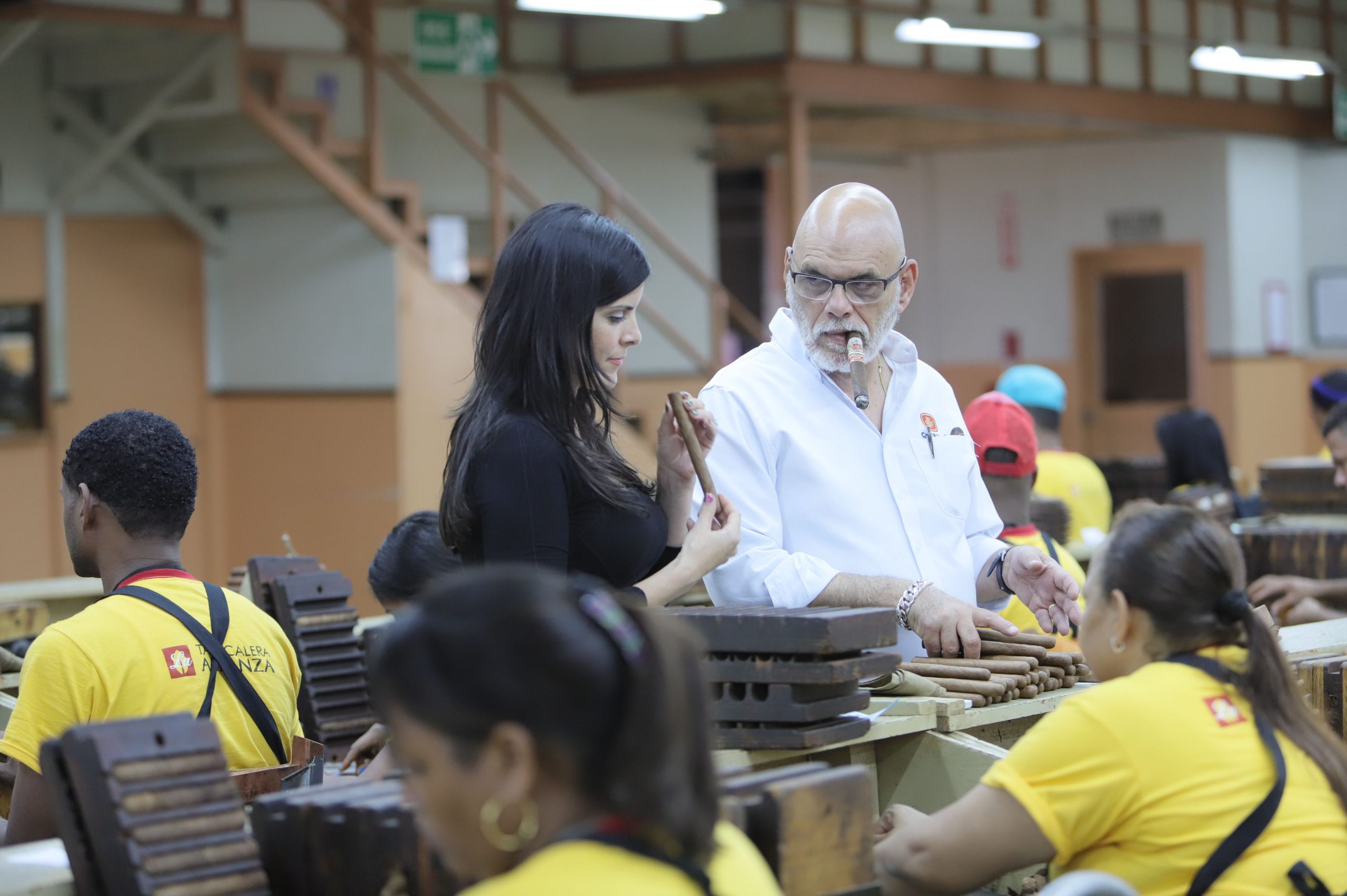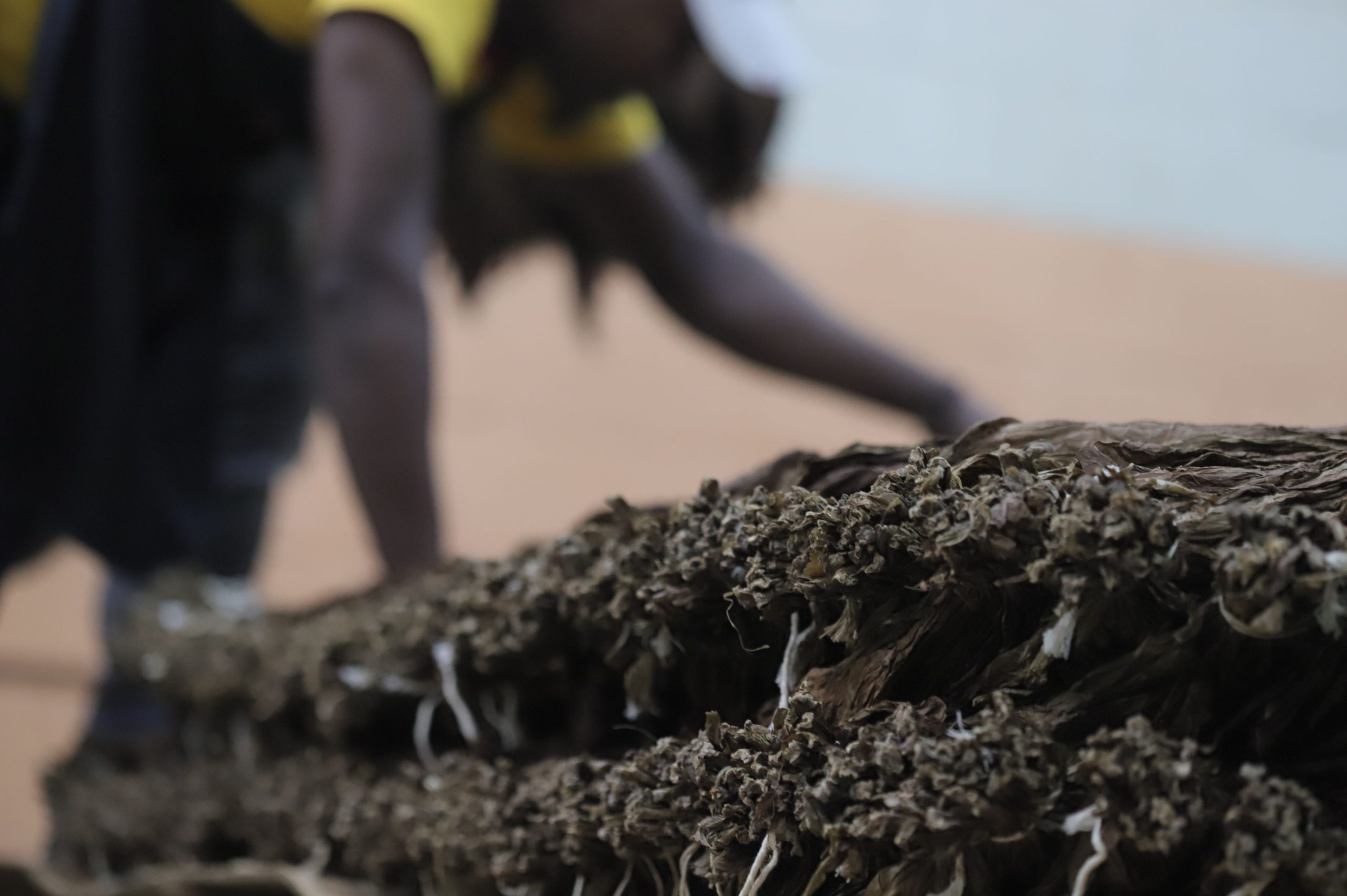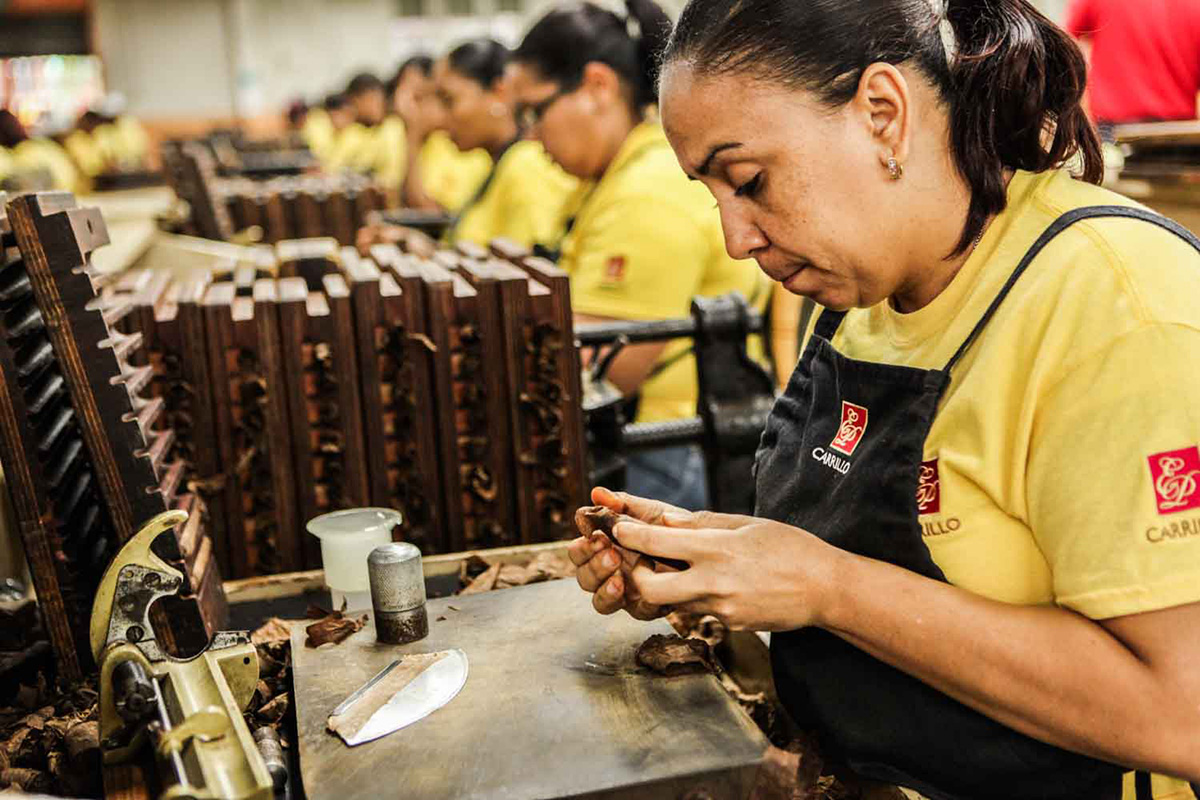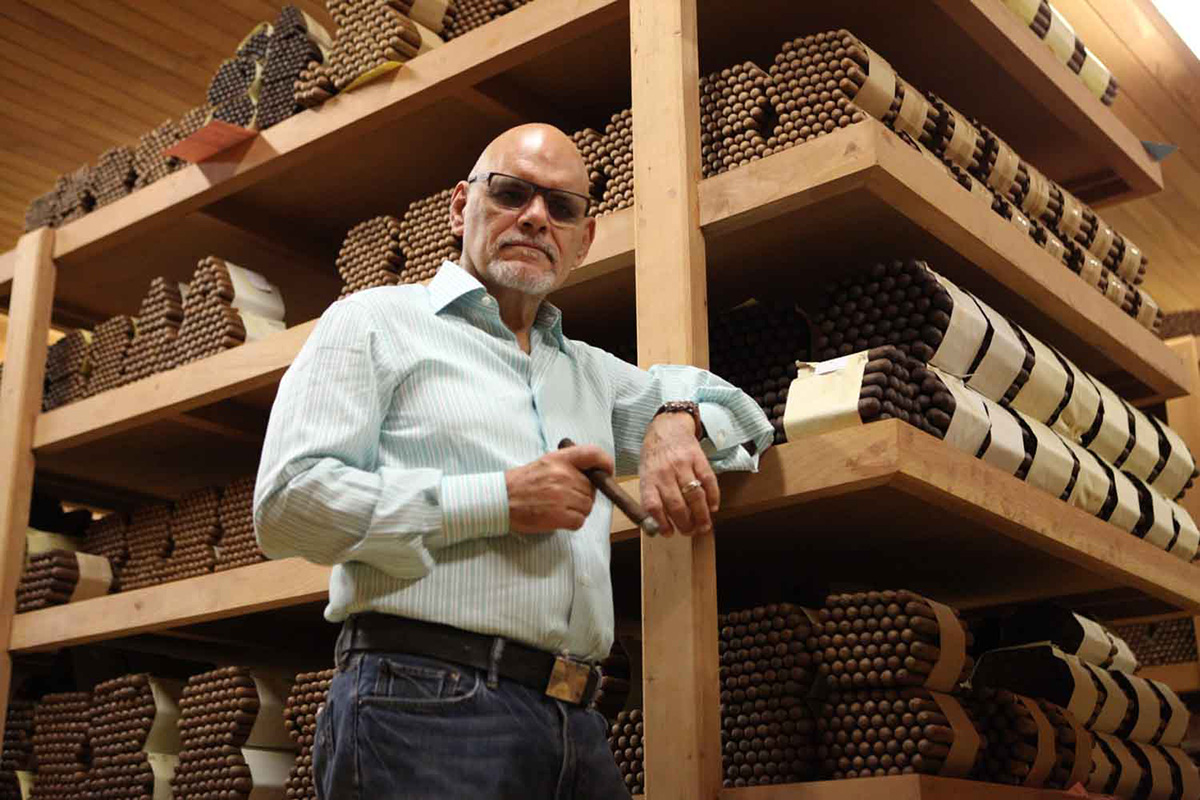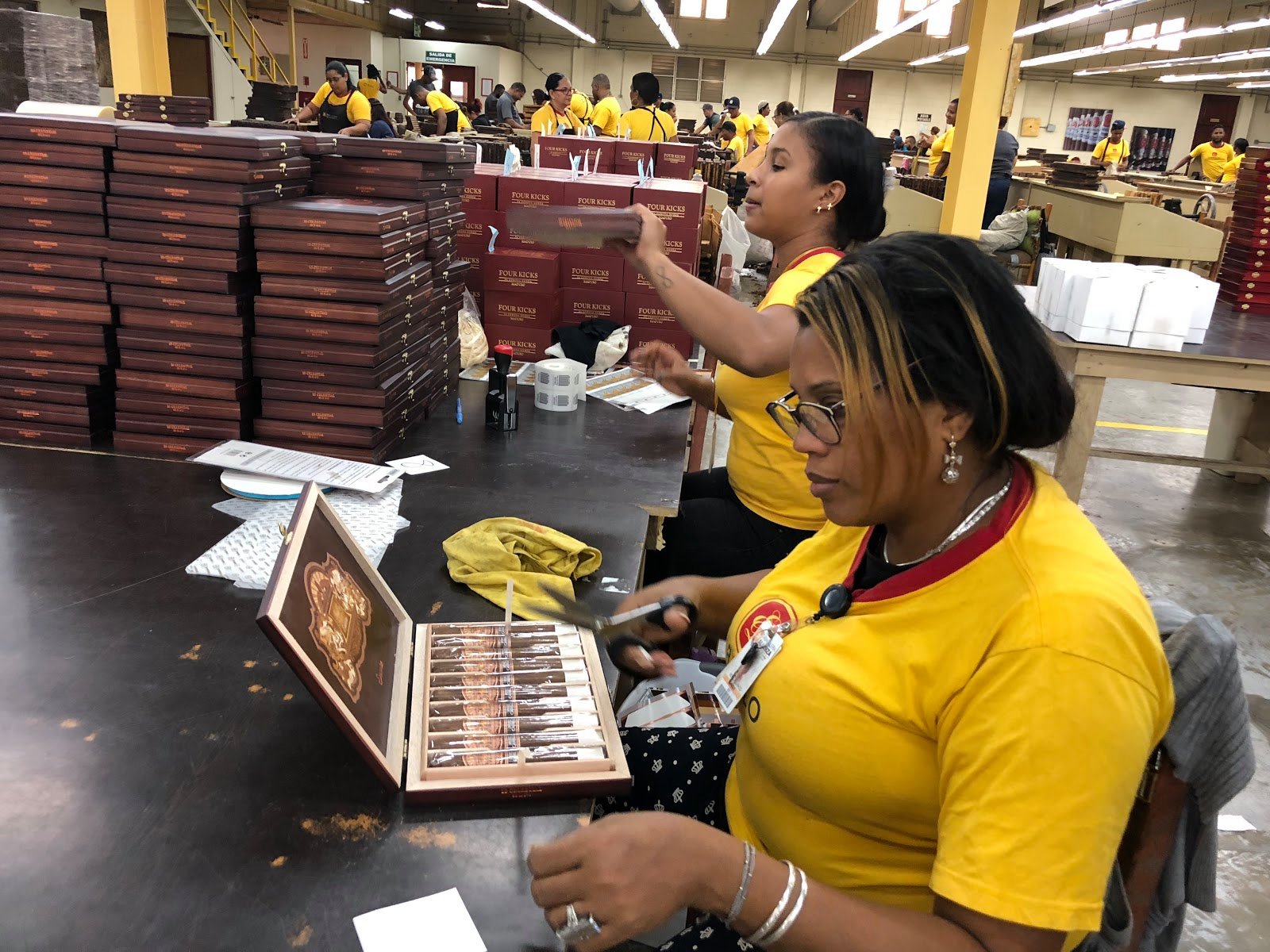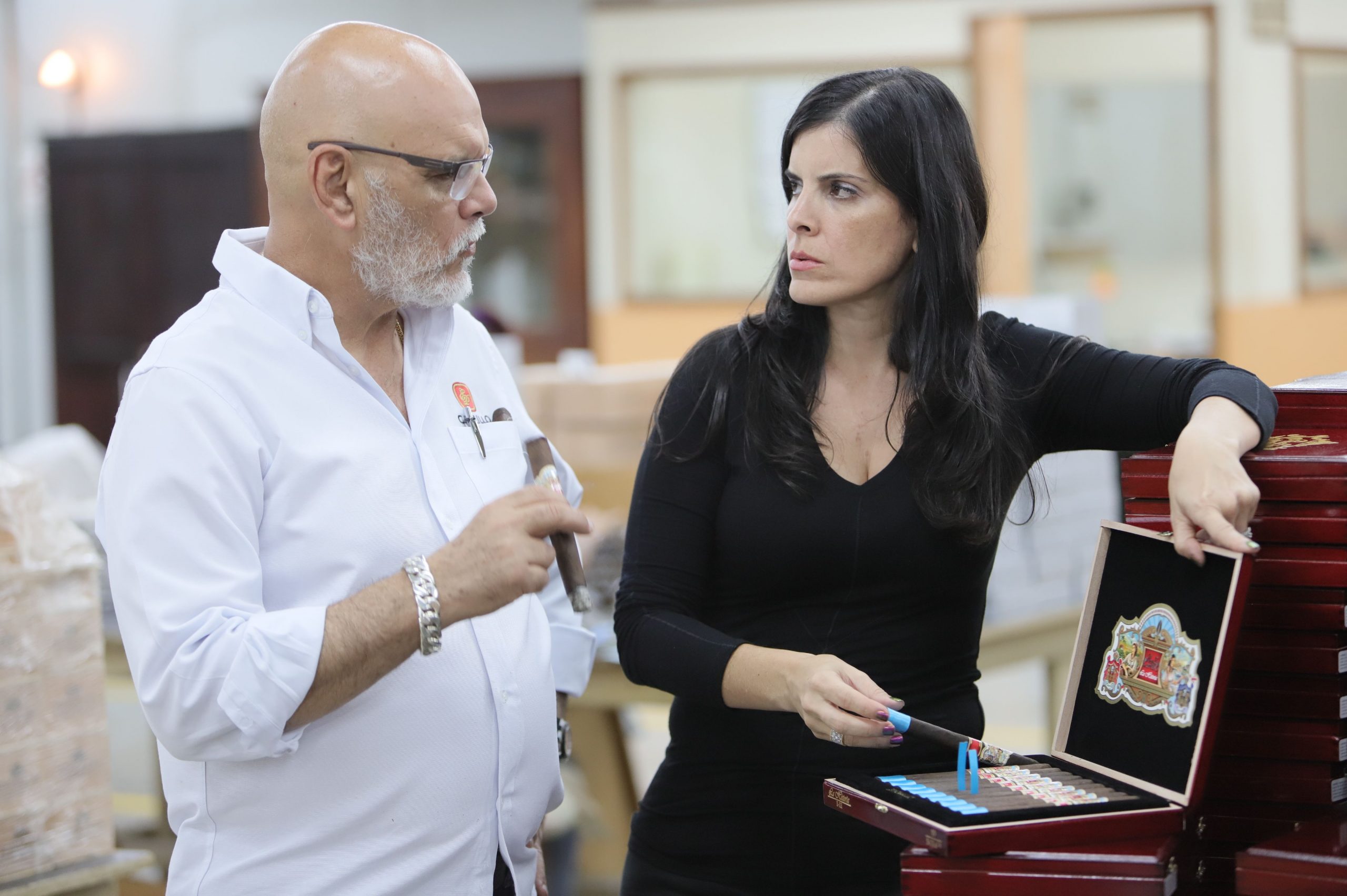When time came to choose a location for the E.P. Carrillo factory, Ernesto knew exactly where it needed to be located. In April 2009, he signed a lease on a 40,000 square foot, stand-alone building in Santiago’s Zona Franca, and immediately began the construction of his dream factory, which he named Tabacalera La Alianza (now Casa Carrillo).
Here is where the tobacco is fermented, aged, hand-made, and packaged under the supervision of Ernesto. Spread across many rolling tables, experienced cigar-rollers are in essence re-learning their craft as they are trained to roll cigars the “Cuban way” – the cigars are beautifully finished with a triple-cap method.

